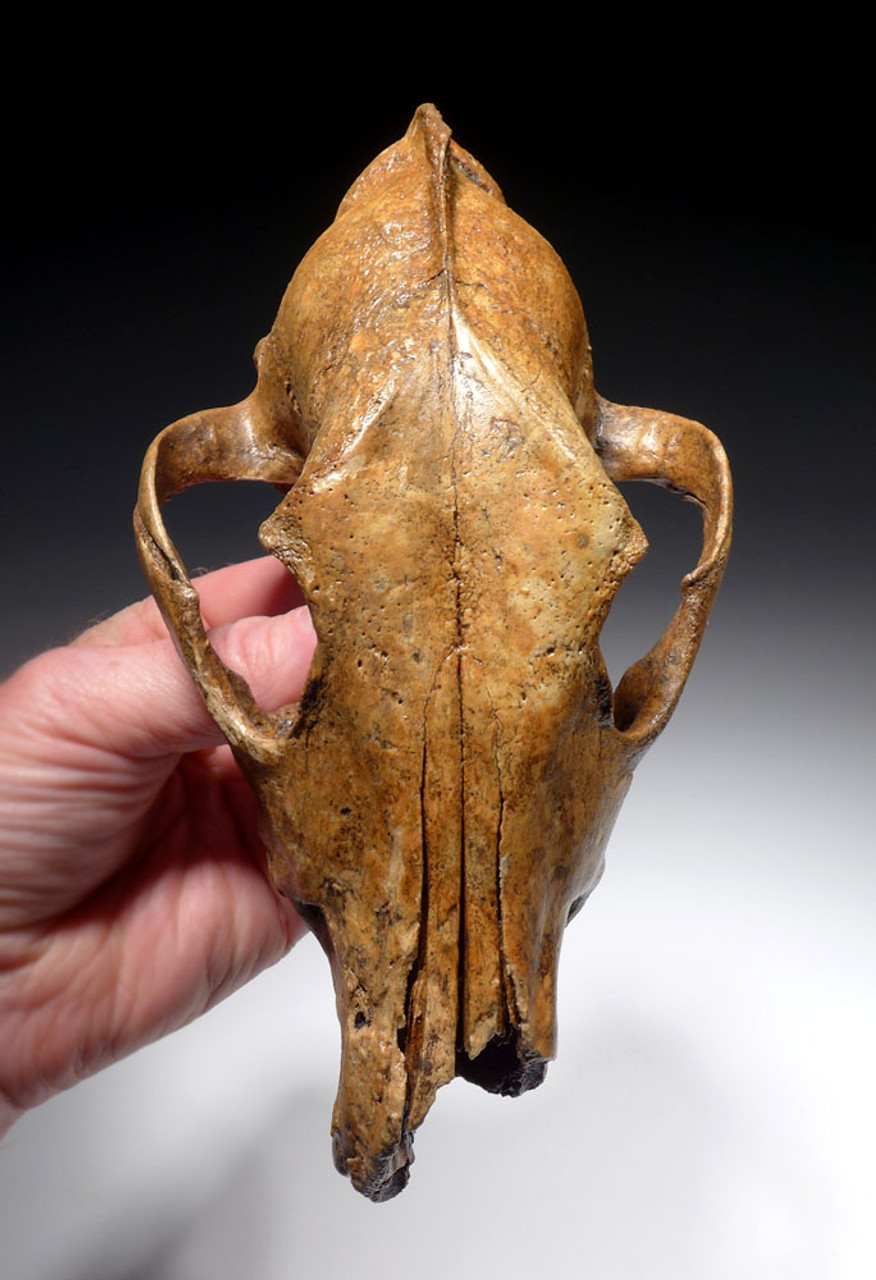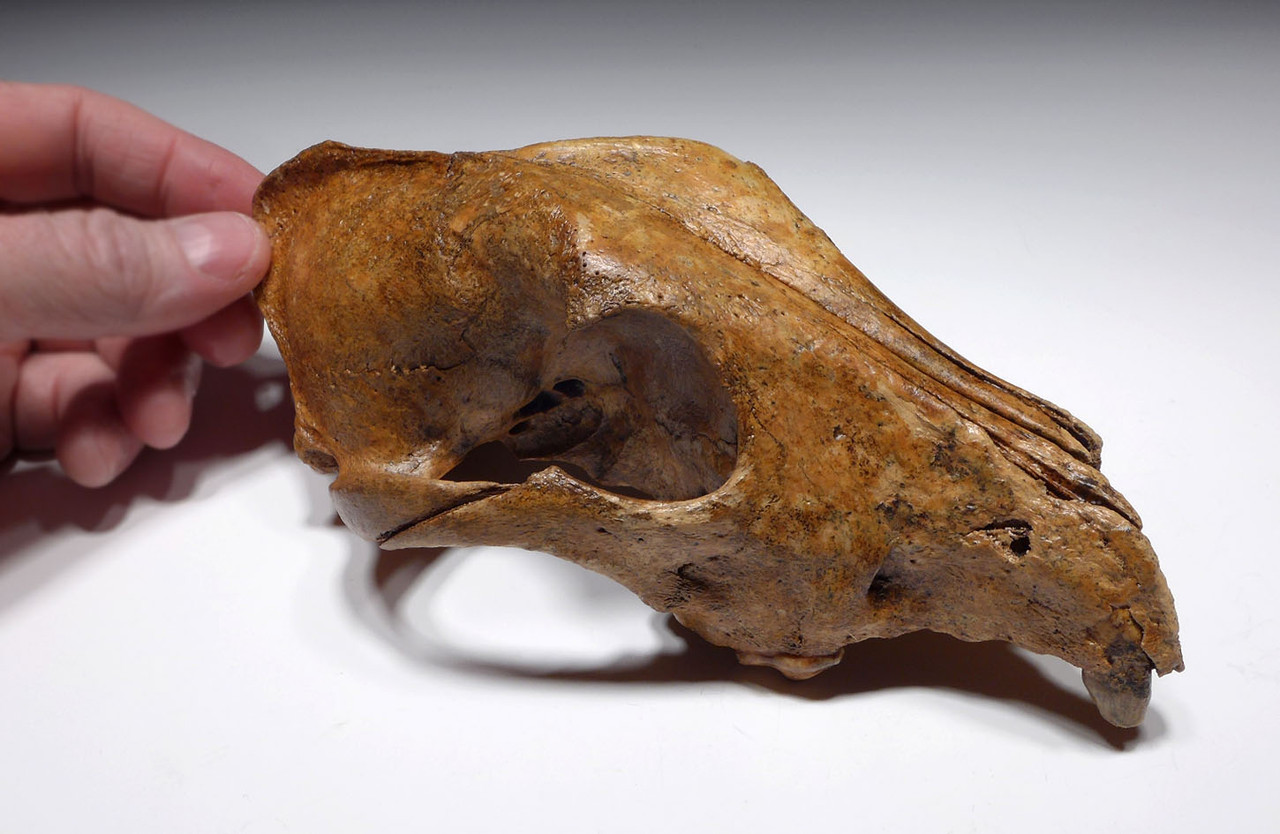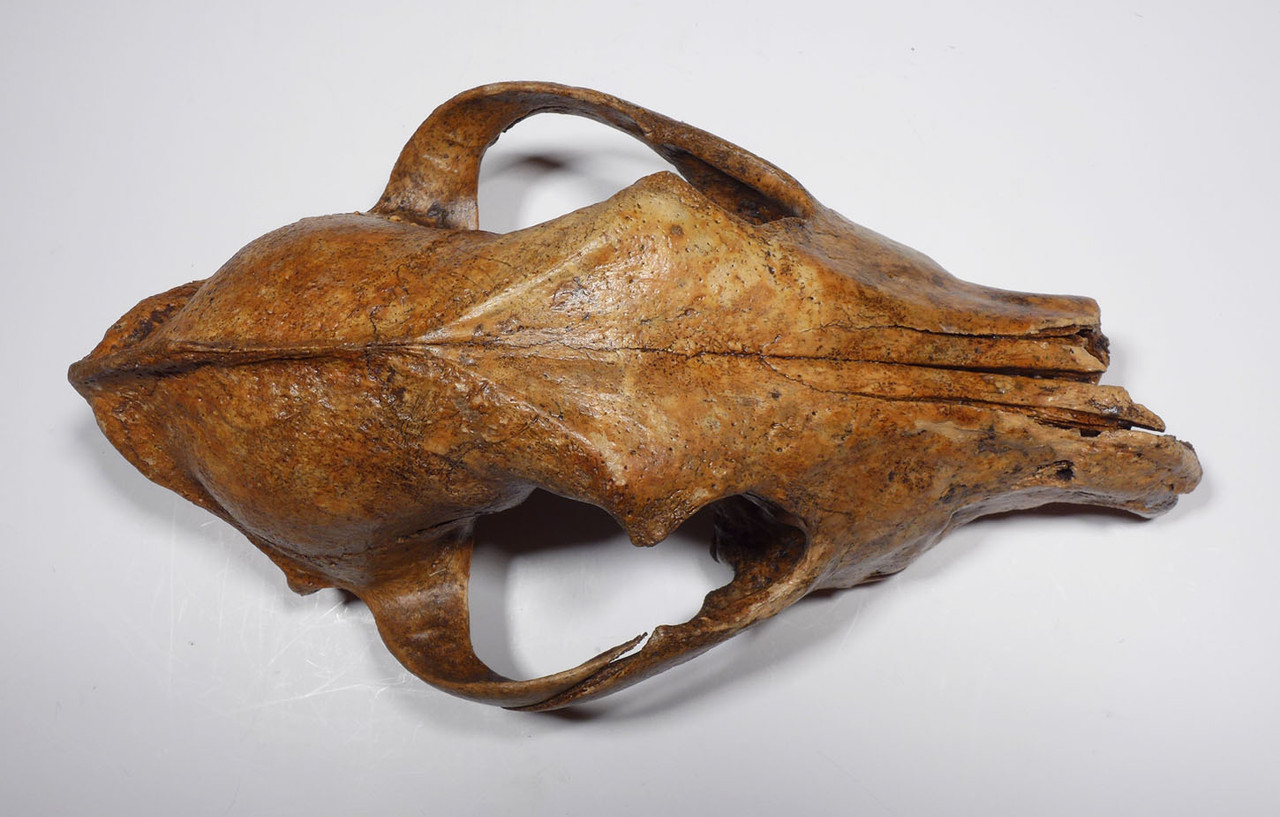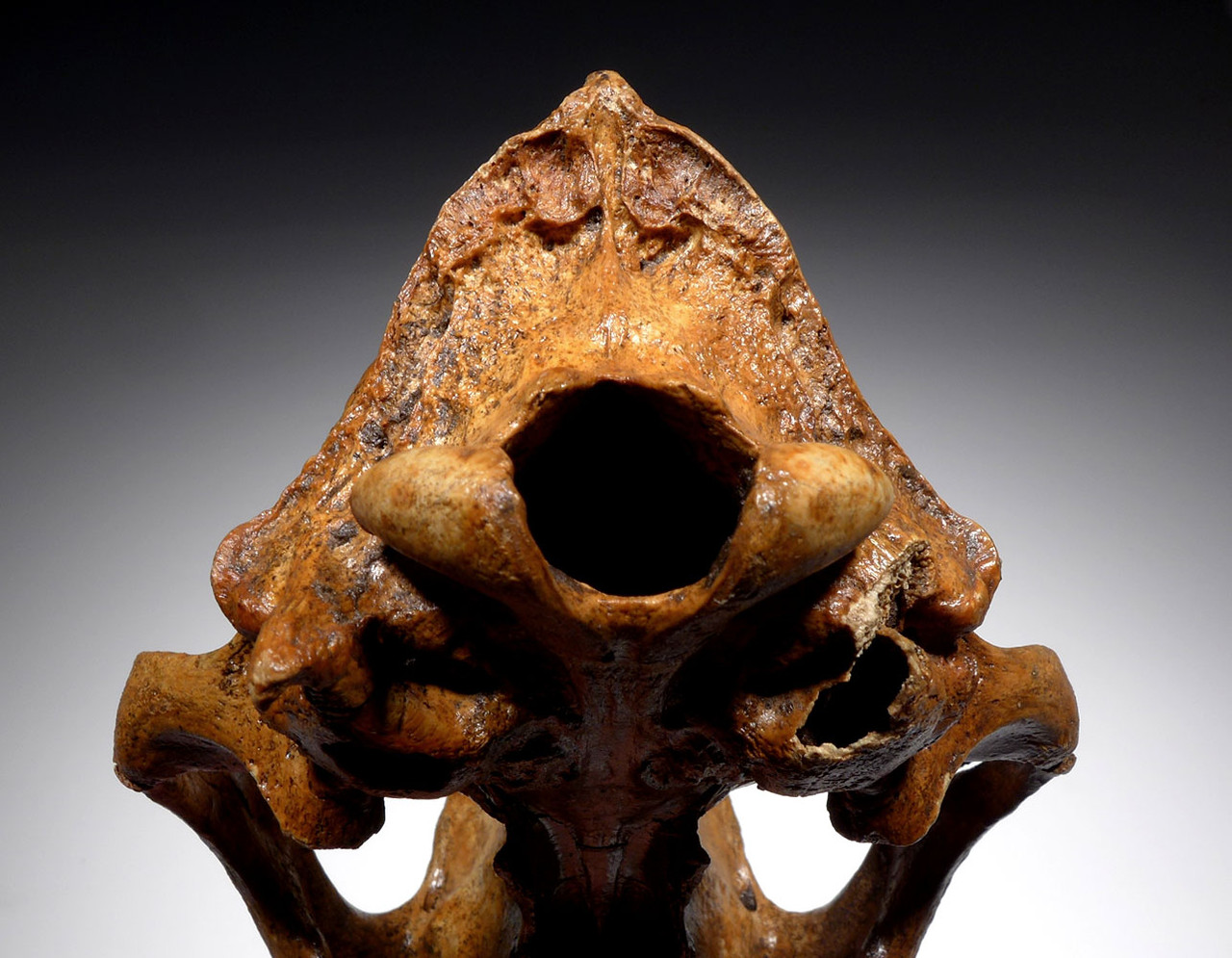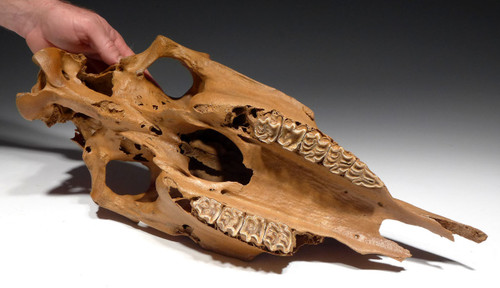Product Description
Rarely are Ice Age canid fossils from Europe ever seen on the open market but here is a VERY rare opportunity to acquire a spectacular specimen. Dredged from a river gravel deposit and discovered at the same depth as Woolly Rhinoceros, Mammoth, and Megaloceros fossils, this skull was found as shown. Because of the fragile nature of fossil canid skulls, they are EXTREMELY RARE to be found this intact! In over the past 20 years, we have only seen less than 6 in all our travels and viewing of private collections in Europe.
Missing only the end of the nasal, this remarkably well preserved example has no repair. Both zygomatic arches are INTACT which is very rare in fossil megafauna skulls. The teeth that are still present are all original and were the only teeth still attached to the skull when found. The color is a warm pumpkin orange and this color runs deep into the tooth enamel and teeth roots, not white like modern fossil skulls show (outside of cave finds). If you are building a display collection of all the Ice Age megafauna of Europe, finding a fossil skull of a wolf from European deposits, can be a lifetime search if this rare opportunity is missed.
This fossil skull was found several decades ago when primitive crane and bucked dredge equipment was used in Central Europe. In over the past decade, this equipment has been replaced with large modern suction dredges that pulverize and destroy any fossils coincidentally found in the gravel mines. Therefore, finding any new specimens has been impossible due to this technological change, making these older collection fossils increasingly rare and valuable!
HISTORY
The fossil record shows evidence of changes in the morphology and body size of wolves during the Late Pleistocene, which may be due to differences in their prey size. Wolf skeletal development can be changed due to a preference for larger prey which results in larger wolves. Considerable morphological diversity existed among grey wolves by the Late Pleistocene. These are regarded as having been more cranio-dentally robust than modern grey wolves, often with a shortened rostrum, the pronounced development of the temporalis muscle, and robust premolars. It is proposed that these features were specialized adaptations for the processing of carcass and bone associated with the hunting and scavenging of Pleistocene megafauna. Compared with modern wolves, some Pleistocene wolves showed an increase in tooth breakage that is similar to that seen in the extinct dire wolf. This suggests that these either often processed carcasses, or that they competed with other carnivores and needed to quickly consume their prey. The frequency and location of tooth fractures found in these wolves compared with the modern spotted hyena indicates that these wolves were habitual bone crackers.
 US DOLLAR
US DOLLAR
 EURO
EURO
 AUSTRALIAN DOLLAR
AUSTRALIAN DOLLAR
 CANADIAN DOLLAR
CANADIAN DOLLAR
 POUND STERLING
POUND STERLING


